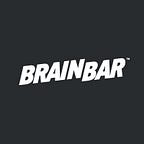The preservation of our collective story — so much of which is told in electronic pulses and stored in bits and bytes — may well hinge on the oldest of materials: clay.
It’s not just any clay. It’s a specially designed stoneware (the stuff of bathroom tiles) formed into 20-by-20 centimeter ceramic tablets. Martin Kunze, an Austrian ceramist and researcher, invented them, and once printed with snippets of science, politics, art, culture and much more, he stores them in a cavern in a salt mine in Hallstatt, deep in the Austrian Alps. The cavern, accessible via an 80 centimeter-wide tunnel, will naturally close up over time. There, what Kunze calls “the greatest time capsule ever” will wait for someone, someday, to find it.
Kunze’s time capsule is the Memory of Mankind (MOM), and it will be the focus of his talk at Brain Bar Budapest 2016.
Think of Memory of Mankind as the anti-Snapchat. And while those of us using cloud backup may feel our digital photo archives are well-secured… well, we’re pretty much deluded.
Sure, you’ll be able to download your stuff again if the dog eats your local storage devices. But Istvan Zoltan’s ideas aside, you’re going to die sooner than later in the grand scheme of things, and then what?
Sure, there’s the Wayback Machine. But the storage devices harboring our digital heritage have lifespans of perhaps a few decades. Even if the ones and zeros survive, the metadata and compression algorithms can go lost. Printouts burn and rot. Great libraries rise and fall. As do civilizations. There’s no reason to believe that ours will be any different.
Archaeologists of the future will find ample evidence of our enormous cities. Geologists will find layers of plastic waste, assuming microbes don’t evolve to eat it in the meantime. But the details of how those cities came to be and the sorts of people that lived in them — so much of it is on magnetic or optical media as delicate, in the long-term, as rose petals.
Kunze recognized the product of his craft as the antidote. Japanese pottery from the Jomon period dates back more than 13,000 years. Cuneiform tablets have survived five millennia.
“My general interest in many branches of knowledge, and my knowing this existing technique to enable us to leave permanent — and permanently readable — records, were the initiative to start MOM,” Kunze said.
While Kunze creates the tiles, the content of those tiles is in general up to others. Anyone can commission and design a tile, and many have, from private citizens to museums. Look through Memory of Mankind’s online gallery and you’ll find the curriculum vitae of one Ulrich Hofmeister; an overview of the city of Gmunden, photos and a short description of the wedding of Susanne and Karl; a memory of Hans Hitzenberger; a ceramic facsimile of Albrecht Dürer’s 1519 portrait of Emperor Maximilian I from the Kunst Historiches Museum Wien; and much, much more.
Kunze has assembled a scientific advisory board to help guide the creation of a meaningful cross-section of discovery. He’s invented “ceramic microfilm,” in which he somehow manages to squeeze 5 million characters (the equivalent of a 400-page book) onto a single 20 cm-by-20 cm tablet. He’s now connecting with major publications — The Guardian, Der Spiegel, Le Monde, El Mundo and others — to provide a geologic-timescale archive of select articles or editions.
If he ends up with far more wedding tablets than science and engineering textbooks, that’s OK, too, he says.
“Having thousands of wedding tablets shows the importance of weddings,” he said. “And it helps to decipher language, since similar contents will have similar descriptions.”
That brings up the question of how someone who comes across the archive in tens of thousands of years would decipher it. Kunze is not relying solely on wedding tablets for this. He’s also creating tablets with photos and explanatory tags to help future historians along.
“Thesauruses, dictionaries, grammar books, orthographies and books of phrases and so on will allow for deeper and more detailed explanations of our languages,” Kunze said.
To learn the German word for “cloud” and “tree” in the distant future, much less access, say, Principia Mathematica, they’ll have to find the archive in the first place. For that, he’s sending a ceramic token with a map showing Hallstatt to each contributor to the archive. The broader the geographical distribution, Kunze figures, the better chance of someone finding it in the distant future. But, he adds, he’s designed the token so that only someone in a civilization roughly as advanced as our own will find it. Otherwise, one risks barbarians breaking and using Kunze’s precious creations as Frisbees or oversized drink coasters.
MOM may be an ultra-long-term project, but it may have short-term benefits, too. The tablets in MOM record our actions and are, in a way, stoneware versions of surveillance cameras. Just as such cameras can deter bad behavior (smile!), he says, so too can the idea that our actions are truly being kiln-fired for posterity.
“We live and behave as if there’s no tomorrow,” Kunze said. “Part of the idea of MOM is to make people realize that there is a tomorrow.”
Article by Todd Neff
